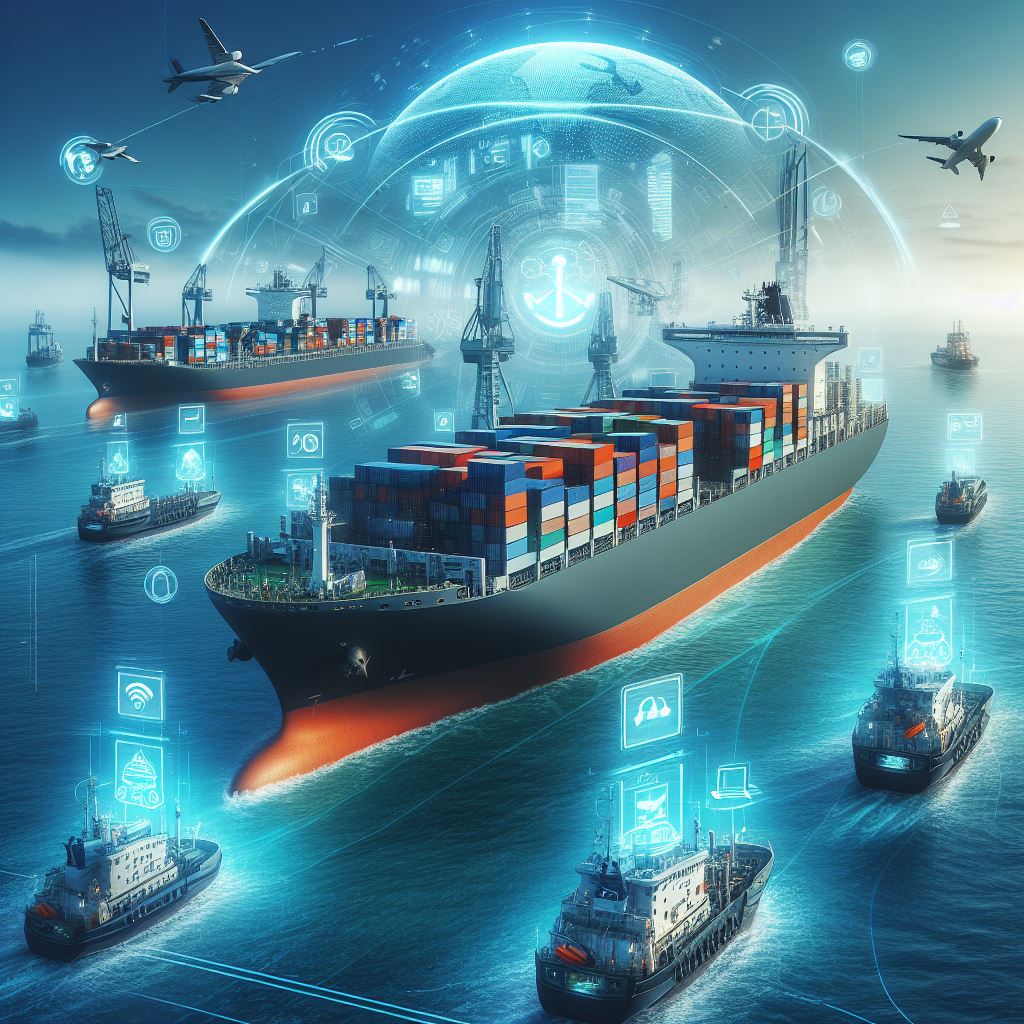What is Maritime Connectivity Solutions?
Maritime Connectivity Solutions refers to the communication link between a vessel, typically a ship or a maritime platform, and onshore infrastructure or other vessels. It allows for the exchange of data, voice communication, and sometimes video between the ship and land-based systems or other ships at sea.

This connectivity is crucial for maritime operations, enabling various functions and services:
- Communication: Ship-to-shore connectivity allows vessels to communicate with onshore facilities, other ships, port authorities, and relevant stakeholders. It facilitates voice communication, messaging, and data transmission.
- Navigation and Safety: Vessels utilize ship-to-shore connectivity for navigation updates, weather reports, maritime safety communications, and receiving critical information related to route planning and potential hazards.
- Operational Management: Connectivity enables the transmission of operational data related to cargo management, engine performance, fuel consumption, and other essential systems onboard. This information aids in efficient operation and maintenance.
- Port Operations: Ships communicate with port authorities and terminals for docking procedures, cargo handling, customs clearance, and other port-related operations. Real-time data exchange facilitates smoother port activities.
- Crew Welfare: Connectivity allows crew members to communicate with their families, access the internet, and utilize onboard entertainment systems, enhancing their well-being during extended periods at sea.
- Regulatory Compliance: Ship-to-shore connectivity enables vessels to comply with regulatory requirements by transmitting required reports, documentation, and compliance data to relevant authorities.
Ship-to-shore connectivity is facilitated through various means, including satellite communication, radio communication (VHF, HF, UHF), cellular networks, and dedicated maritime communication systems. Satellite communication, in particular, is crucial for providing continuous connectivity, especially in remote or deep-sea areas where other communication methods might be limited.
Efficient and reliable ship-to-shore connectivity is vital for the maritime industry to ensure safe, efficient, and well-coordinated operations while vessels are navigating, in port, or at anchor.
This connectivity helps the Maritimes companies for various purposes:
- Operational Communication: It enables ships to communicate with ports, headquarters, or other vessels for operational purposes, such as navigation, weather updates, logistics, and emergencies.
- Data Transmission: Ship-to-shore connectivity facilitates the transfer of various data types, including sensor data (for monitoring ship systems and environmental conditions), cargo information, and other logistical details.
- Crew Communication: It allows crew members on board to communicate with their families, access the internet, and stay connected with the rest of the world while at sea.
There are several technologies used for ship-to-shore connectivity, including satellite communication, radio systems (like VHF/UHF), cellular networks near the coast, and emerging technologies like high-throughput satellite systems, which offer higher bandwidth and improved connectivity for maritime operations.
How does Ship-to-shore connectivity help the vessels?
Ship-to-shore connectivity is pivotal in enhancing various aspects of vessel operations, safety, and efficiency. Here’s how it aids vessels:
- Operational Efficiency: Connectivity enables vessels to communicate with onshore entities, including ports, headquarters, and logistics centers. This facilitates efficient coordination for cargo handling, scheduling, route optimization, and navigation assistance, reducing turnaround times and enhancing operational efficiency.
- Real-Time Information Exchange: Vessels can receive real-time updates on weather conditions, navigational hazards, port congestion, and other crucial information. This helps captains and crew members make informed decisions, adjust routes accordingly, and ensure the safety of the vessel and its cargo.
- Remote Monitoring and Diagnostics: Ship-to-shore connectivity allows for remote monitoring of the vessel’s systems and machinery. This enables early detection of potential issues or malfunctions, allowing for proactive maintenance and reducing the risk of breakdowns at sea.
- Crew Welfare and Communication: Connectivity enables crew members to stay connected with their families, access essential services, and remain in touch with onshore support systems. This boosts morale and mental well-being and ensures efficient communication in emergencies.
- Safety and Emergency Response: In case of emergencies or distress situations, vessels can quickly establish communication with maritime authorities, nearby ships, or rescue services. This rapid communication is crucial for timely assistance and ensuring the safety of the crew and the vessel.
- Regulatory Compliance and Documentation: Connectivity aids in maintaining and transmitting necessary documentation and compliance records, facilitating regulatory requirements such as reporting, customs clearance, and other administrative tasks efficiently.
- Data Collection and Analysis: Ship-to-shore connectivity allows vessels to transmit various data streams, including environmental data, engine performance metrics, and fuel consumption data. This information can be analyzed to optimize operations, improve fuel efficiency, and reduce the vessel’s environmental impact.
In essence, ship-to-shore connectivity serves as a lifeline for vessels, enabling seamless communication, improving operational efficiency, ensuring crew welfare, enhancing safety measures, and facilitating compliance with regulations. It transforms vessels into interconnected entities capable of leveraging real-time information and support, ultimately contributing to safer, more efficient, and sustainable maritime operations.
Please sign up for our weekly IoT Newsletter to have these articles direct to your inbox. Thanks for reading 😉